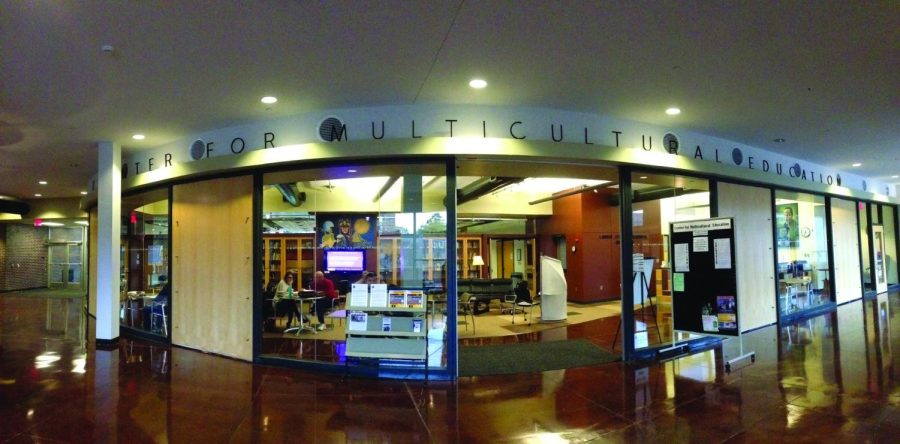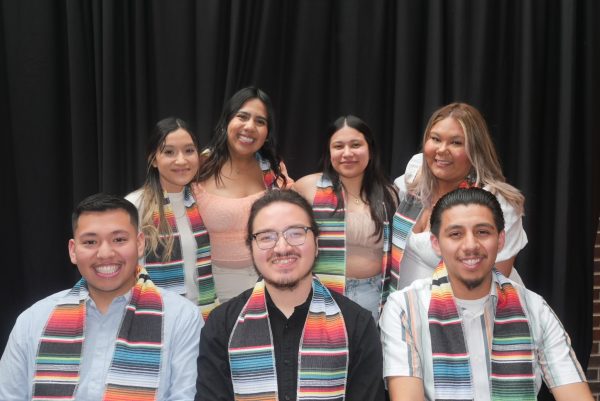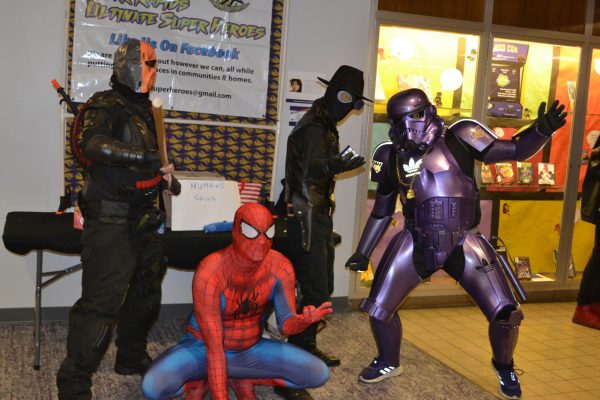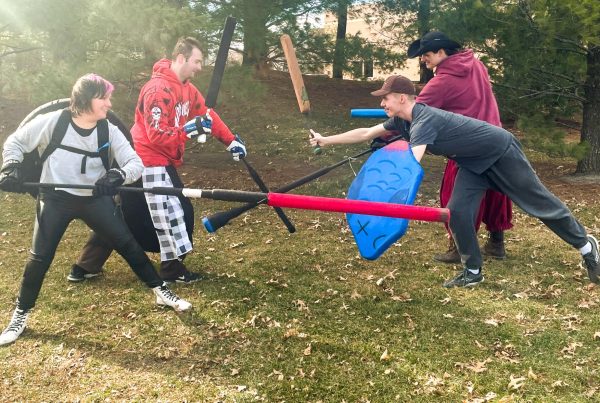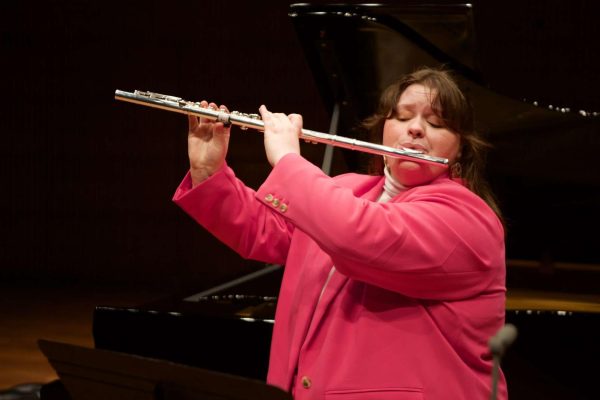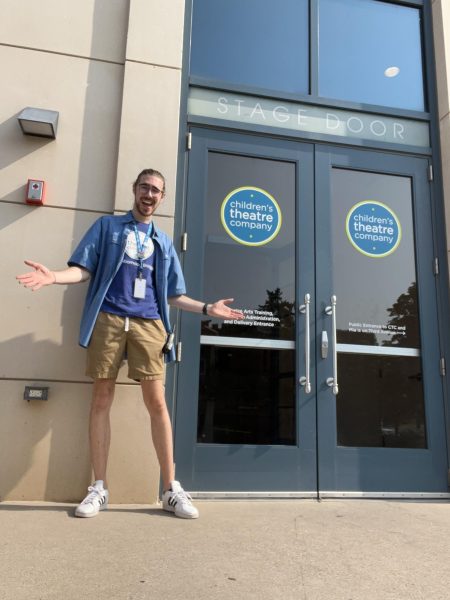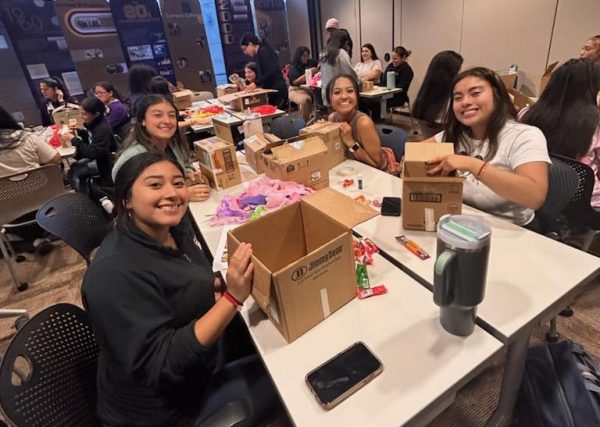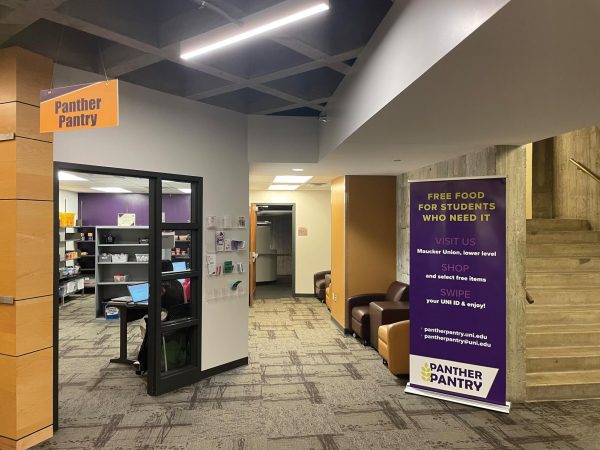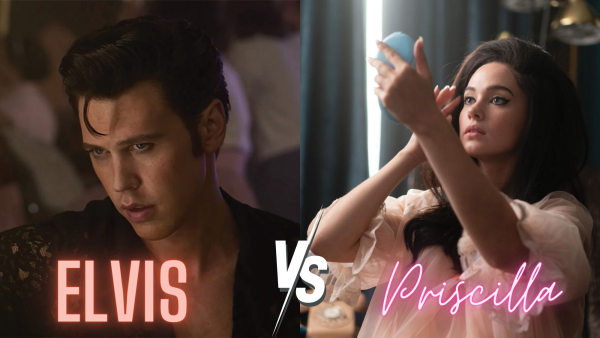Wading through misrepresentation
The Center for Multicultural Education (CME) is a safe space for students to gather and chat during the day. Often its positive impact is not represented clearly through campus tours or the media.
Jan 23, 2023
Upon first glance into the Center for Multicultural Education (CME) you are greeted with, on most days, a bustling space. Upon entry, you are likely to be met with a whiteboard that displays the question of the day. The large flatscreen television offers background noise; the long table houses pamphlets, flyers, brochures and oftentimes leftover food.
The front desk typically has more people behind it than seats available, and just to the right, an office that serves as a revolving door for various students and faculty.
If you have the courage to wade through all the beautiful chaos in the front, you may happen upon a computer lab or two, filled to the brim with students, some pretending to get work done, others actually doing so. There’s even a lounge with seats and lights galore. On a lazy day, the couches are filled and Netflix plays on the television, drawing in a crowd.
Chiquita Loveless, director of Diversity, Inclusion and Social Justice Department made every effort to make the space feel like a home. “Students of color deserve to be comfortable here, making the CME feel like home is the least I could do.”
If you’re unfamiliar with the space and the culture of the CME, all of this might seem overwhelming to walk into. But for Black and Brown students on campus this space is home, the chaos is familiar and understandable. If asked, many would say they wouldn’t have it any other way. Graduate student Eboni Springfield of the CME, “I just love being there. There’s always something going on and it’s a space that makes me feel the most comfortable on campus.”
The CME is a space that seeks to advance inclusion and social justice on campus through advocacy and support of marginalized and underrepresented students. “My goal as the CME coordinator is to create a space where students do not have to code switch or be something they are not.” Maya Buchanan, CME program coordinator says. “I tailor the programming to the specific needs and interests of the students who frequent the space and those who may potentially in the future.”
Unfortunately, not many students at UNI know the space even exists.
UNI admissions bears the brunt of the responsibility of making sure potential and new students are aware of all the resources available to them. Incoming students have multiple opportunities to tour and get acquainted with campus. The first opportunity is during a visit day, during orientation, and if you are a multicultural or first gen student, Jump Start.
Before the Fall 2022 semester, the student recruitment group Panther Ambassadors was split into two. Ethnic Student Promoters (ESP) and Student Admissions Ambassadors (SAA). Both groups were tasked with offering tours, sitting on panels and interacting with prospective students.
There was a very clear racial divide, purposely done so that students of color who were considering UNI could see themselves here on campus – although it wasn’t a guarantee that students of color would automatically be assigned a student volunteer from ESP. Each group received extensive training on how panels and tours were to be conducted. Former UNI student Meka Mosley, who served on the board of ESP from 2016-2017, had this to say about the training:
“We were encouraged to talk about the CME and show potential students the space. A busy day in the CME could be the defining moment where someone decides to attend UNI.”
Mosley herself felt drawn to the space when she toured the CME during jumpstart. Many students in ESP frequented the CME, so it seemed like a no brainer to include the space on the tour.
SAA, a predominantly white organization, oftentimes struggled to accurately represent the CME.
Anna Stevens, a senior at UNI and a student employee at the CME recalls many instances where SAA members just couldn’t get it right. “I’ve heard so many questionable things about the CME, like ‘the university always gives them free food.’ They always mention hot wings, hot topics and never any resources we offer or what actually happens here. It’s frustrating.”
Another student who wished to remain anonymous recalls, “There was a white tour guide with three Black students in her group. She made no mention of the CME and just walked right past. I was shocked because what if that had an effect on their final decision?”
Seeing Black and Brown faces is not just important for the university statistics – it also draws in other students of color and bodes well for continued diversity, inclusion and social justice efforts.
Now in the Fall of 2022, the two groups have been merged, but the issue persists. Panther Ambassadors is a predominantly white institution and despite training and education, student volunteers can’t seem to get it right. If marginalized students don’t know the resources available to them, why would they attend UNI, let alone stay?
“I have been at UNI long enough to see the Black population get smaller and smaller. I’m worried that soon the CME won’t be enough to bring us all together,” Cienna Daniels, senior criminology major says. There’s also something to be said about the burden that is placed on students to recruit and promote for the university. “I’m burnt out. In my leadership positions on campus, I feel this crushing weight placed on me to recruit and retain students of color. It’s not my job, but if I don’t do it, who will?” Stevens, who also serves as the president of the Black Student Union says. It’s exploitative in nature the way the university relies on students for matters of recruitment, especially when diversity initiatives at the senior level are lacking and UNI struggles to retain faculty and staff of color.
When asked about possible solutions to this issue, sophomore Larry Gray suggested, “I think it makes sense to ask the staff to help you if you don’t know what the space is for; that’s better than saying something wrong.”
Gray, like many others, call the CME their home away from home, and hope that one day the space will receive the recognition it deserves for serving underrepresented students. “I know it’s not my job, but I wanna see students of color on campus so I do my part by accurately representing the CME and other resources UNI has to offer. That’s all I can do.” Gray says.


